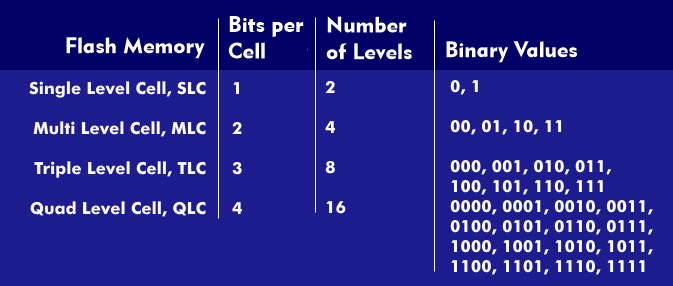triple level cell (flash memory) (TLC)
A Triple Level Cell (TLC) is a memory cell of a flash memory. Since a TLC cell stores three bits in one memory cell, it has four times the storage density of a Single Level Cell( SLC) and twice that of a Multi Level Cell( MLC).
Triple Level Cells (TLC) have storage densities ranging from 32 gigabits to 512 gigabits per chip. They operate with eight discrete levels of floating gate charge. This means that the state of charge and its readout are extremely critical and must be designed accordingly. For example, the error correction requirements of 24 bits to 72 bits are many times higher than those of single- level and multi-level cells.
The retention of stored data is also limited and is around 6 months, whereas data can be stored for up to 10 years in SLC technology and up to one year in MLC technology. The erase cycles of 500 are also much lower than those of the other technologies.
The Quadruple Level Cell( QLC), which works with sixteen different voltage levels, achieves an even higher storage density.

